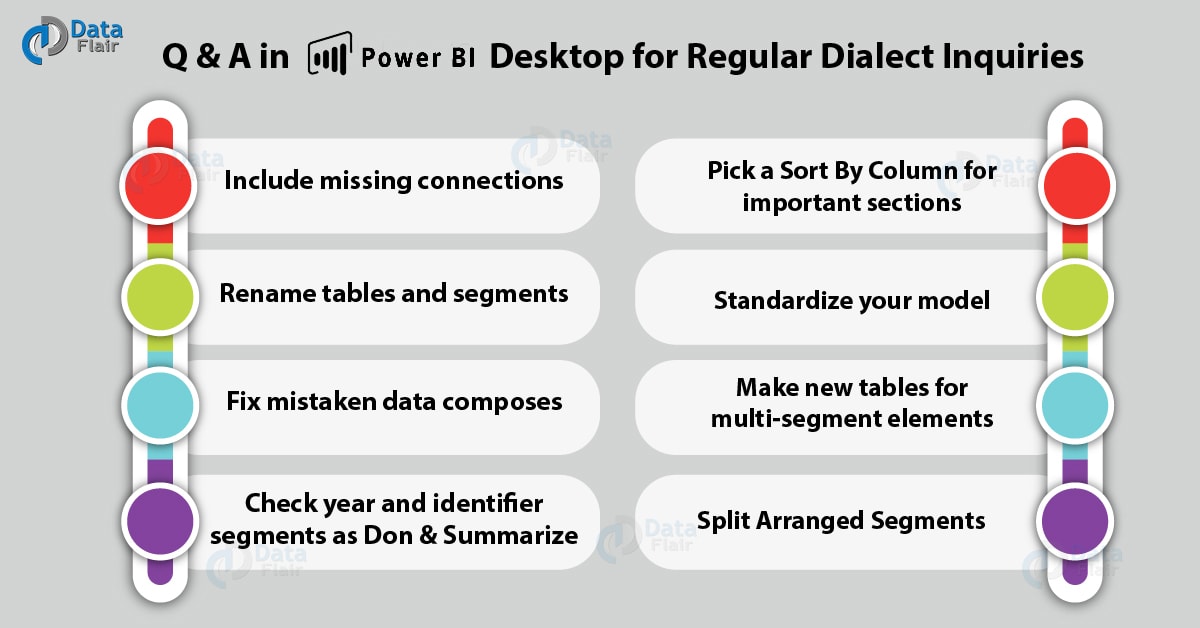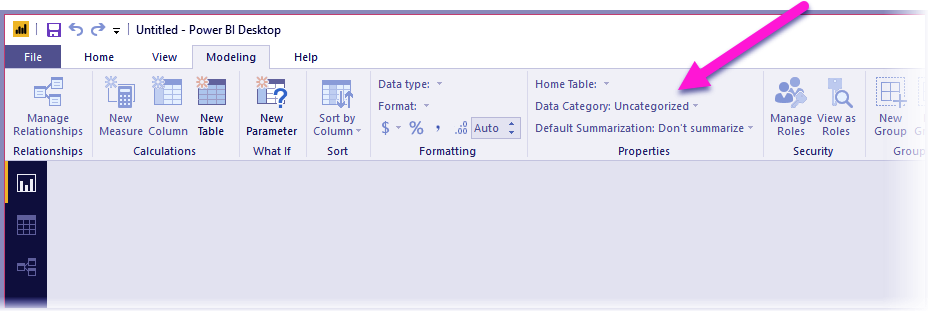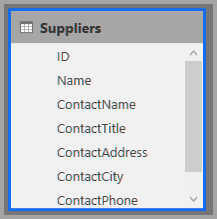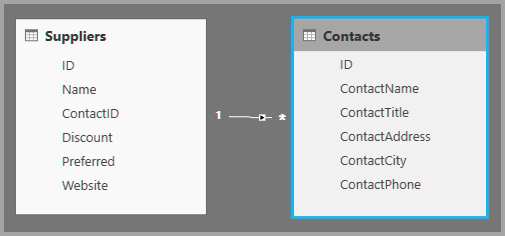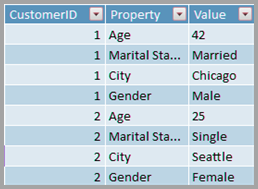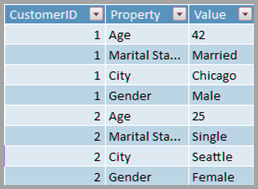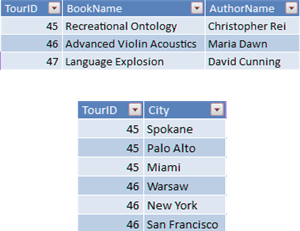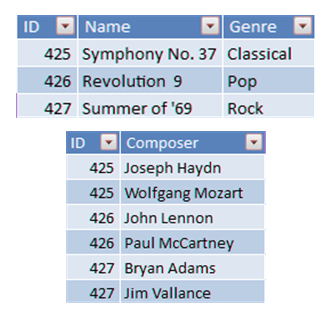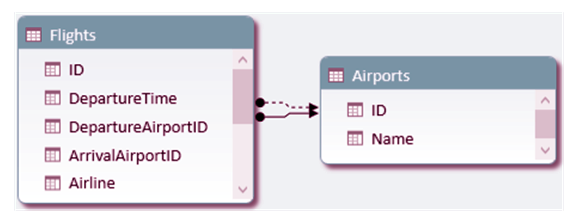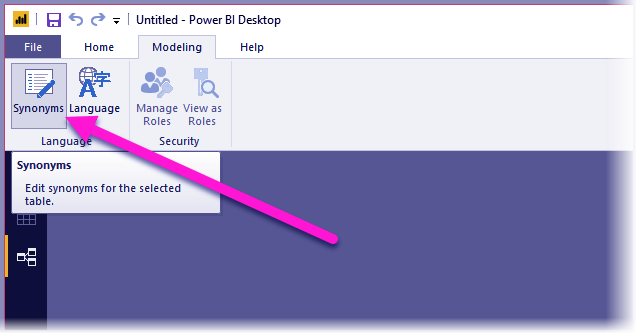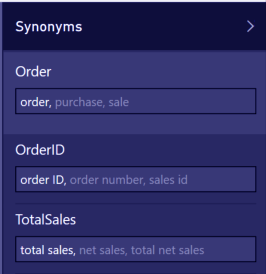Q & A in Power BI Desktop for Regular Dialect Inquiries
FREE Online Courses: Elevate Your Skills, Zero Cost Attached - Enroll Now!
1. Objective
In our last tutorial, we discussed Analytics Pane in Power BI. Today, in this Q & A in Power BI Desktop Tutorial, we will learn how to add a missing relationship and rename tables and columns. Moreover, we will study how to fix incorrect data types and choose the data category for each date and geography column. At last, we will cover to normalize your model.
So, let’s start Q & A in Power BI Desktop Tutorial.
2. Q & A in Power BI Desktop
Utilizing regular expressions and common dialect to make inquiries of your data is ground-breaking. Considerably more intense is the point at which your data answers, which is the thing that Q & A in Power BI Desktop gives you a chance to do.
To empower Q & A in Power BI Desktop to effectively translate the huge gathering of inquiries it’s equipped for reacting to, Power BI Q&A must make suppositions about the model. In the event that the structure of your model doesn’t meet at least one of these suppositions, you’ll have to change your model. Those changes for Q&A are similar best-rehearse enhancements for any model in Power BI, in any case, whether you utilize Q & A in Power BI Desktop.
Do you know How to Create Your Own Measures in Power BI Desktop
Note – Questions and answers are just accessible when working with a model that contains imported data. Live associations with SSAS and DirectQuery models are not bolstered.
Note – Questions and answers require the accompanying C runtime refresh in case you’re utilizing a form of Windows before Windows 10. You can take a stab at introducing imperative updates from Windows Update or physically introduce the required part from Microsoft (KB2999226). https://support.microsoft.com/en-us/enable/2999226/to refresh for-widespread c-runtime-in-windows
In the accompanying areas, we depict how to change your model so it functions admirably with Q & A in Power BI Desktop.
3. Include Missing Connections
On the off chance that your model is missing connections between tables, neither Power BI reports nor Q&A can translate how to join those tables on the off chance that you make an inquiry about them. Connections are the foundation of a decent model. For instance, you can’t request the “aggregate deals for Seattle clients”. If the connection between the requests table and the client’s table is absent. The accompanying pictures indicate you cases of a model that necessities work, and a model that is prepared for Q & A in Power BI Desktop.
Needs work
Prepared for Q & A Power BI Desktop
Connections fit as a fiddle for Q & A Power BI Desktop
Have a look at – Integration of Microsoft Flow and Power BI
4. Rename Tables and Segments
The selection of tables and sections is essential for Q & A in Power BI Desktop. For instance, on the off chance that you have a table named CustomerSummary that contains a rundown of your clients, you would need to make inquiries like “Rundown the client synopses in Chicago” instead of “Rundown the clients in Chicago”.
While Q & A can do some essential word breaking and identification of plurals, Q & A expect that your table and segment names precisely mirror their substance.
Think about another illustration. Envision you have a table named Headcount that contains first and last names and representative numbers, and you have another table named Employees that contains worker numbers, work numbers, and begin dates. While this may comprehend by individuals who know about the model, another person who asks “check the workers” will get a tally of the lines from the “Representatives” table, which is likely not what they had as a main priority, since that is a tally of each activity every worker has ever had. It would greatly improve to rename those tables to genuinely reflect what they contain.
Needs work
Prepared for Q & A Power BI Desktop
5. Fix Mistaken Data Composes
Imported data can have off base data writes. Specifically, date and number sections that are foreign made as strings won’t decipher by Q & A in Power BI Desktop as dates and numbers. You should ensure you select the right data to compose in your Power BI show.
6. Check year and Identifier Segments as Don’t Summarize
Power BI forcefully totals numeric segments of course, so addresses like “aggregate deals by year” can now and then outcome in a fabulous aggregate of offers close by a great aggregate of years. In the event that you have particular segments where you don’t need Power BI to show this conduct, set the Summarize By property on the section to Don’t Summarize. Be aware of year, month, day, and ID segments, as those sections, are the most incessant issues. Different segments that aren’t sensitive to a whole.
Let’s revise Power BI Matrix Visualization in detail
For example, age could likewise profit by setting Summarize By to Don’t Summarize or to average. You’ll discover this setting in the Modeling tab.
The Data Category gives extra semantic information about the substance of a segment past its data compose. For instance, a whole number section may be set apart as a Zip Code, a string segment may be set apart as a City, Country, Region, et cetera. This data is utilized by Q & A in Power BI in two critical routes: For perception determination and for dialect predispositions.
In the first place, Power BI Q & A utilizes the Data Category data to help settle on decisions about what sort of visual show to utilize. For instance, it perceives that segments with a date or time Data Categories are commonly a decent decision for the level pivot of a line outline or the play hub of an air pocket diagram. Also, it expects that outcomes containing sections with topographical Data Categories may look great on a guide.
Second, Power BI Q & A makes some informed conjectures about how clients are probably going to discuss date and geology sections, to enable it to comprehend certain kinds of inquiries. For instance, the “when” in “When was John Smith contracted?” is relatively sure to guide to a date section, and the “Dark coloured” in “Include clients Brown” will probably be a city than a hair shading.
7. Pick a Sort By Column for Important Sections
The Sort By Column property enables arranging on one section to naturally sort by an alternate segment. For instance, when you ask “sort clients by shirt estimate”, you presumably need your Shirt Size section to sort by the basic size number (XS, S, M, L, XL) instead of one after another in order (L, M, S, XL, XS).
Do you know how many types of filters are available in Power BI?
8. Standardize your Model
Rest guaranteed that we’re not recommending you have to reshape your whole model. In any case, there are sure structures that are just so troublesome that Power BI Q & A wouldn’t deal with them well. In the event that you play out some essential standardization of the structure of your model, the ease of use of Power BI reports will increment fundamentally, as will the precision of Q & A comes about.
The general govern you ought to take after is this: Each remarkable “thing” the client discusses ought to be spoken to by precisely one model protest (table or section). Along these lines, if your clients discuss clients, there ought to be one client protest. Furthermore, if your clients discuss deals, there ought to be one deals protest. Sounds basic, isn’t that right? Contingent upon the state of the data you’re beginning with, it can be. There are rich data moulding capacities accessible in Query Editor on the off chance that you require them, while a significant number of the more clear changes can happen essentially utilizing estimations in the Power BI show.
The accompanying areas contain some normal changes you may need to perform.
9. Make New Tables for Multi-Segment Elements
On the off chance that you have various sections that go about as a solitary particular unit inside a bigger table, those segments ought to be part out into their own table. For instance, on the off chance that you have a Contact Name, Contact Title, and Contact Phone section inside your Companies table, a superior outline has a different Contacts table to contain the Name, Title, and Phone and a connection back to the Companies table. That makes it essentially less demanding to make inquiries about contacts freely of inquiries regarding organizations for which they are the contact and enhances show adaptability.
Needs work
Prepared for Q & A in Power BI Desktop.
a. Turn to dispense with property packs
In the event that you have property sacks in your model, they ought to be rebuilt to have a solitary section for each property. Property sacks, while advantageous for overseeing huge quantities of properties, experience the ill effects of various characteristic constraints that neither Power BI reports nor Q&A are intended to work around.
Let’s discuss What is Dynamic Row-Level Security in Power BI?
For instance, consider a CustomerDemographics table with CustomerID, Property, and Value sections. Where each column speaks to an alternate property of the client (for cases, age, conjugal status, city, and so forth). By over-burdening the importance of the Value section in view of the substance of the Property segment, it ends up unthinkable for Q&A to translate most questions which reference it. A basic inquiry, for example, “demonstrate the age of every client” may happen to work. Since it could translate as “demonstrate the clients and client socioeconomics where a property is an age”.
Be that as it may, the structure of the model just doesn’t bolster somewhat more mind-boggling questions like “normal time of clients in Chicago.” While clients who specifically creator Power BI reports can at times find sharp approaches to get the data they are searching for, Q & A Power BI Desktop just works when every section has just a solitary importance.
Needs work
Prepared for Q & A Power BI Desktop
b. Association to dispose of apportioning
On the off chance that you’ve apportioned your data over a different table, or have turned qualities over numerous segments, various basic activities will be troublesome or unimaginable for your clients to accomplish. Look at first as a regular table apportioning: a Sales2000-2010 table and a Sales2011-2020 table. On the off chance that the greater part of your vital reports is limited to a particular decade. You could presumably abandon it thusly for Power BI reports. Nonetheless, the adaptability of Q & A Power BI Desktop will lead your clients to anticipate that answers will question like “aggregate deals by year.” For this to work, you’ll have to the association the data into a solitary Power BI show table.
Thus, consider a common rotated esteem segment: a BookTour table containing Author, Book, City1, City2, and City3 segments. With a structure, this way, even straightforward inquiries like “check books by city” can’t translate effectively. For this to work, you ought to make a different BookTourCities table. Which associations the city esteems into a solitary segment.
Follow this link to know about Hyperlink in Power BI in Dashboard & Excel Power Pivot
10. Split Arranged Segments
In the event that the source from which you’re bringing in your data contains designed segments, Power BI reports (and Q & A Power BI Desktop) won’t reach inside the segment to parse its substance. So in the event that you have, for instance, a Full Address segment that contains the address, city and nation. You should likewise part it into Address, City and Country sections so your clients can question against them independently.
Needs work
Prepared for Q & A Power BI Desktop
Essentially, on the off chance that you have any full name sections for a man. You’ll need to include First Name and Last Name segments, just on the off chance that somebody needs to make inquiries utilizing incomplete names.
a. Make new tables for multi-esteem segments
Likewise, a comparative circumstance, if the source from which you’re bringing in your data contains multi-esteem segments, Power BI reports (and Q & A Power BI Desktop) won’t reach inside the section to parse out the substance. Along these lines, on the off chance that you have. For instance, a Composer section that contains the names of various writers for a melody. You should part it into numerous columns in a different Composers table.
Needs work
b. Denormalize to wipe out idle connections
The one special case to the “standardization is better” control happens when there is in excess of one way to get starting with one table then onto the next. For instance, in the event that you have a Flights table with both SourceCityID and DestinationCityID sections. Every one of which identifies with the Cities table, one of those connections should set apart as inert. Since Q & A Power BI Desktop can just utilize dynamic connections, you would not able to make inquiries about either source or goal, contingent upon which you picked. On the off chance that you rather denormalize the city name segments into the Flights table. You’ll have the capacity to make inquiries like: “list the flights for tomorrow with a source city of Seattle and a goal city of San Francisco.”
Needs work
Prepared for Q & A Power BI Desktop
c. Add equivalent words to tables and segments
This progression applies particularly to Q & A Power BI Desktop (and not to Power BI reports when all is said in done). Clients regularly have an assortment of terms they use to allude to a similar thing. For example, add up to deals, net deals, add up to net deals. Power BI’s model enables these equivalent words to add to tables and sections inside the model.
This can be an imperative advance. Indeed, even with direct table and segment names, clients of Q&A make inquiries utilizing the vocabulary that first comes to them, and are not browsing a predefined rundown of segments. The more sensible equivalent words you can include, the better your clients’ experience will with your report. To include Synonyms, in Relationships see, select the Synonyms catch in the lace, has appeared in the accompanying picture.
Read about How to Create Power BI Key Performance Indicator
The Synonyms field shows up on the correct side of Power BI Desktop. Where you can include your equivalent words, as appearing in the accompanying picture.
Be cautious while including equivalent words, since adding a similar equivalent word to in excess of one section or table will present vagueness. Questions and answers use the setting where conceivable to pick between vague equivalent words. However, not all inquiries have an adequate setting. For instance, when your client asks “tally the clients”. On the off chance that you have three things with the equivalent word “client” in your model. They probably won’t find the solution they are searching for. In these cases, ensure the essential equivalent word is exceptional. As that is what utilize as a part of the rehashing. It can alarm the client to the vagueness, implying they should need to ask it in an unexpected way.
So, this was all about Q & A Power BI Desktop Tutorial. Hope you like our explanation.
11. Conclusion
Hence, in this tutorial, we learned about Q & A in Power BI Desktop, how to add a missing relationship and rename tables and columns. Moreover, we studied how to fix incorrect data types and choose the data category for each date and geography column. At last, we covered the normalize your model. Still, you have a query regarding Q & A in Power BI Desktop, share with us!
Related Topic – Power BI DAX
For reference
Did you know we work 24x7 to provide you best tutorials
Please encourage us - write a review on Google
